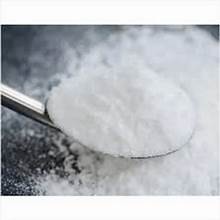In the realm of laboratory sciences, precision, accuracy, and reliability are paramount. To achieve these goals, scientists and researchers rely on a myriad of chemical compounds, each carefully selected for their unique properties and applications. Di Sodium Phosphate (DSP), a compound derived from phosphoric acid, stands out as a versatile substance with a wide range of uses in laboratories across various disciplines. Let’s delve into the world of DSP, exploring its composition, properties, and essential applications that make it indispensable in scientific research.
As laboratories continue to advance, the role of DSP remains fundamental. Scientists and researchers rely on this compound to unlock the mysteries of biology, chemistry, and medicine, paving the way for groundbreaking discoveries and innovations. In the intricate world of scientific exploration, DSP stands as a reliable ally, enhancing precision and enabling researchers to unravel the complexities of the natural world.
Understanding Di Sodium Phosphate (DSP)
1. Chemical Composition and Properties
Di Sodium Phosphate, represented by the chemical formula Na2HPO4, is a white, crystalline powder that is highly soluble in water. It is composed of two sodium (Na+) ions, one hydrogen (H+) ion, one phosphorus (P5+) ion, and four oxygen (O2-) ions. This chemical composition gives DSP its unique characteristics, making it suitable for various laboratory applications.
2. Buffering Capacity
One of the key properties of DSP is its buffering capacity. Buffers are essential in maintaining a stable pH level in solutions, especially during experiments involving sensitive biological substances. DSP’s ability to resist drastic changes in pH makes it invaluable in biochemical and molecular biology research, ensuring the accuracy of experimental results.
Essential Uses of Di Sodium Phosphate in Laboratories
1. Buffer Solutions in Biochemical Assays
DSP is widely used in the preparation of buffer solutions for biochemical assays and experiments. By controlling the pH level of the solution, DSP ensures that enzymatic reactions and other biological processes occur under optimal conditions. Its buffering capacity makes it particularly useful in assays involving enzymes, DNA, RNA, and proteins, where maintaining a specific pH range is critical for accurate results.
2. Staining Procedures in Histology and Pathology
In histology and pathology laboratories, DSP finds application in staining procedures. It is used as a component in stains like Hematoxylin and Eosin (H&E), which are fundamental in tissue sample staining. DSP assists in the fixation of dyes to tissues, enhancing the contrast and visibility of cellular structures under microscopes. This is vital for diagnosing diseases and understanding the microscopic anatomy of tissues.
3. Molecular Biology Experiments
In molecular biology research, DSP plays a significant role in various experiments. It is used in DNA and RNA isolation procedures, helping to maintain the stability and integrity of nucleic acids. Additionally, DSP is utilized in polymerase chain reaction (PCR) techniques, where it acts as a buffering agent, ensuring the optimal pH for the reaction to take place.
4. Analytical Chemistry
DSP is employed in analytical chemistry techniques, such as spectrophotometry and colorimetry. In spectrophotometric assays, it serves as a background electrolyte in solutions, preventing interference from impurities and ensuring accurate measurements of absorbance. Similarly, in colorimetric assays, DSP stabilizes reagents and helps maintain the chemical reactions at specific pH levels, ensuring the reliability of quantitative analyses.
5. Cell Culture Media
In cell culture applications, DSP is utilized in the formulation of cell culture media. Maintaining the appropriate pH level is critical for the growth and viability of cells. DSP acts as a buffer, preventing drastic changes in the pH of the culture medium due to cellular metabolism. This stability is essential for cell culture experiments, ensuring the consistency and reproducibility of results.
Conclusion: Di Sodium Phosphate – Enhancing Laboratory Precision
Di Sodium Phosphate (DSP) stands as a testament to the importance of precise chemical compounds in laboratory research. Its versatile properties make it indispensable in various scientific disciplines, ranging from biochemistry and molecular biology to pathology and analytical chemistry. By providing stable pH environments, enhancing staining procedures, and ensuring the accuracy of analytical techniques, DSP significantly contributes to the reliability and validity of experimental outcomes.




